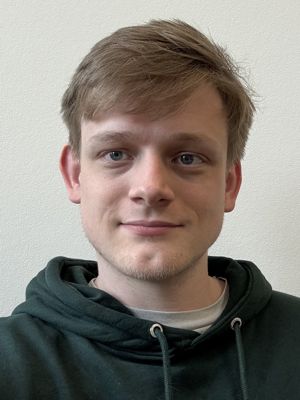Project B9 - Magnetoelectric Sensors for Movement Detection and Analysis

Mobility-limiting diseases affect millions of people worldwide. By investigating typical mobility-limiting diseases, such as Parkinson’s disease (PD), Multiple Sclerosis and Stroke, this project focuses on using magnetic actuators and magnetoelectric sensors for human motion analysis. It aims to capture relative movements of magnetic components fixed to the body, considering both spatial (distance, position, orientation) and temporal aspects. During the recent funding period, the project involved hardware development of wearable sensors, simulating magnetic signals for algorithm training, creating real-time algorithms for motion tracking, and validating algorithms using simulated and imported optical data. The approach enhances understanding of human motion for clinical assessment. The project’s contributions included 3D sensor and coil developments adapted to the requirements for human movement detection, a kinematic simulation model, and real-time algorithms for accurate motion analysis. In general, Optical Motion Capturing (OMC) using near-IR cameras and retroreflective markers is the gold standard reference for any motion analysis validation [B9-9, Ab19, Sh18]. It provides mm-range precision for absolute tracking, but is tied to a laboratory-based scenario. Magnetic motion sensing / localization uses a combination of distributed magnetic actuators and sensors [Ro07, Pa04], making it particularly attractive for relative tracking of body parts. This is clinically relevant for gait stability assessment (e.g., based on step width [Sk20]). While inertial measurement units (IMUs) based on accelerometry and gyroscopy are widely used in human motion analysis, similar behavior requires complex models or black box machine learning algorithms [B9-10, Di18, Le22].
In the next funding period, and informed by experiences from the actual funding period, the project outlines two main development lines for the continuation: ME movement detection system enhancement (WP1) and virtual data analysis (WP2). WP1 focuses on system scalability, accuracy, and efficiency. It involves optimizing hardware and software, so that the system can eventually capture the entire human body, with improved measurement accuracy compared to the actual development stage, and enhanced energy efficiency for wearable applications. WP2 involves data analysis using a digital twin approach, extracting and augmenting movement data, describing movements as assessed with ME, and associating them with mobility-limiting diseases. The project plans to merge both work packages in the second part (WP3), collecting real-life data for clinical implementation and validation.
The ultimate goal of the project is to have a validated and functional ME movement detection system to aid clinical decision making. The system will be able to measure daily-relevant body movements of healthy individuals and patients with mobility-limiting diseases on a relative level (i.e. movement of one part of the body relative to another part of the body), will be clinically and experimentally informed, and will be validated against the current gold standard (camera-based system for clinical systems and inertial measurement unit-based system for home assessment). The system should have the potential to assist clinicians in making clinical diagnoses, measuring disease progression and measuring treatment response in an uncharted area of analysis and with unprecedented accuracy.
Involved Researchers
| Person | Role | |
|---|---|---|
 |
Prof. Dr. Walter Maetzler Medicine Neurology |
Project lead |
 |
Prof. Dr.-Ing. Gerhard Schmidt Electrical Engineering Digital Signal Processing |
Project lead |
 |
M.Sc. Henning Eikens Electrical Engineering Digital Signal Processing and System Theory |
Doctoral researcher |
 |
Dr. Clint Hansen Medicine Neurology |
Postdoc |
 |
Dr. Markus Hobert Medicine Neurology |
Medical doctor |
Role within the Collaborative Research Centre
B9 participates in the focus group F6 - Biomedical Applications and F3 - Comparison of Sensor Concepts. Close cooperation is planned with the following partners:
| Collaborations | |
|---|---|
| Z1 (MEMS Magnetoelectric Sensor Fabrication) | This project is closely interlinked with the ME-sensor projects, especially those that operate in resonance. Such sensors are mainly produced in Z1. |
| B1 (Sensor Noise Performance and Analogue System Design), B2 (Digital Signal Processing), Z2 (Magnetoelectric Sensor Characterization) | B9 will benefit from B1, B2, and Z2 adapting system frontends and small sensor arrays to the requirements of B9. In turn, we will communicate test results back to B1, B2, Z2 to facilitate the development of suitable measurement systems after transfer of mature sub-systems to Z2. |
| B2 (Digital Signal Processing), B10 (Magnetoelectric Sensor Systems for Cardiologic Applications) | The project will use the same real-time framework as projects B2 and B10. Thus, all extensions made in either one of the projects will benefit the other and immediately speed up development. Furthermore, the results of the localization schemes will be shared and discussed with the other three projects in order to have best possible cooperation. |
| B1 (Sensor Noise Performance and Analogue System Design) | Wireless data transmission (Bluetooth-based) hardware will be used from project B1. |
| A2 (Mechanically Soft Micro and Macrocomposite for Wearable Devices) | Mechanically flexible hardware concepts (such as printed circuit boards and printed connection lines) will be used from project A2. |
Project-related Publications
|
|
|
|
|
|
|
|
|
|
|
|
|
|
|
|
|
|
|
|
|
|
|
|
|
|
|
|
|
|
|
|




